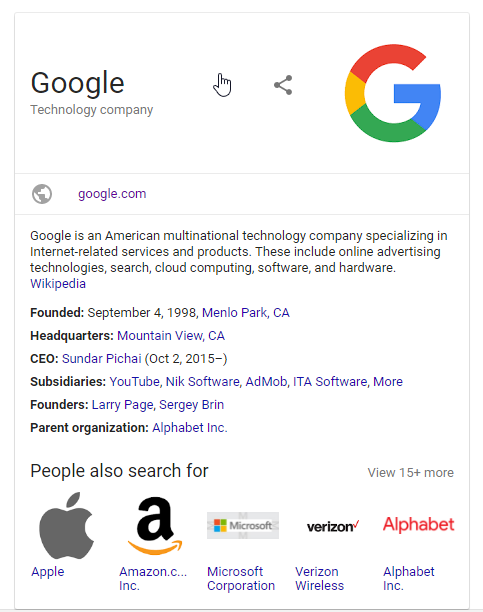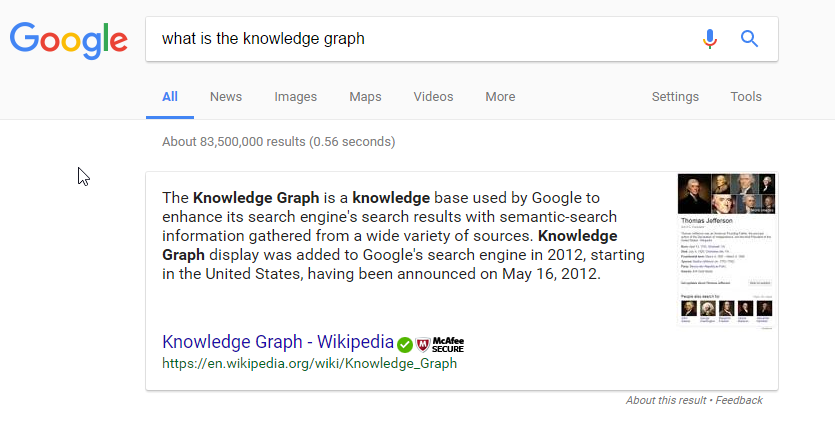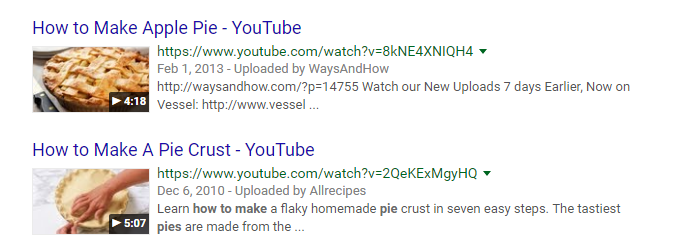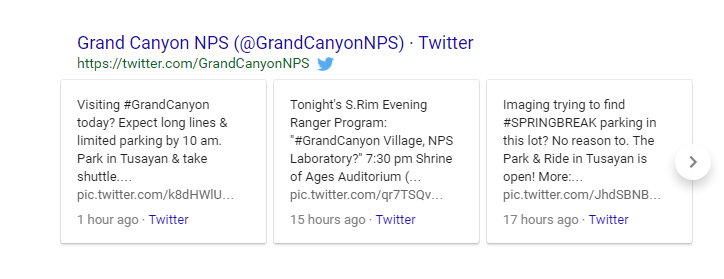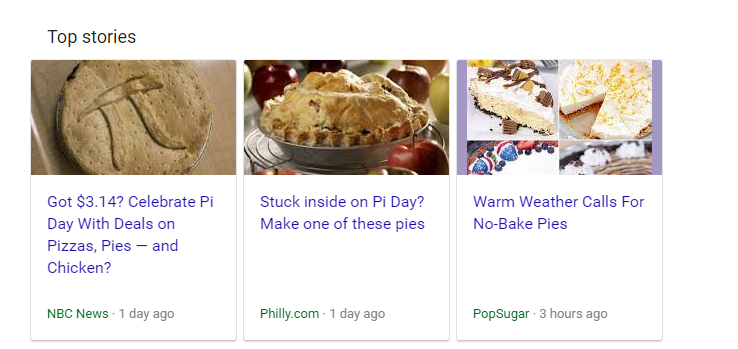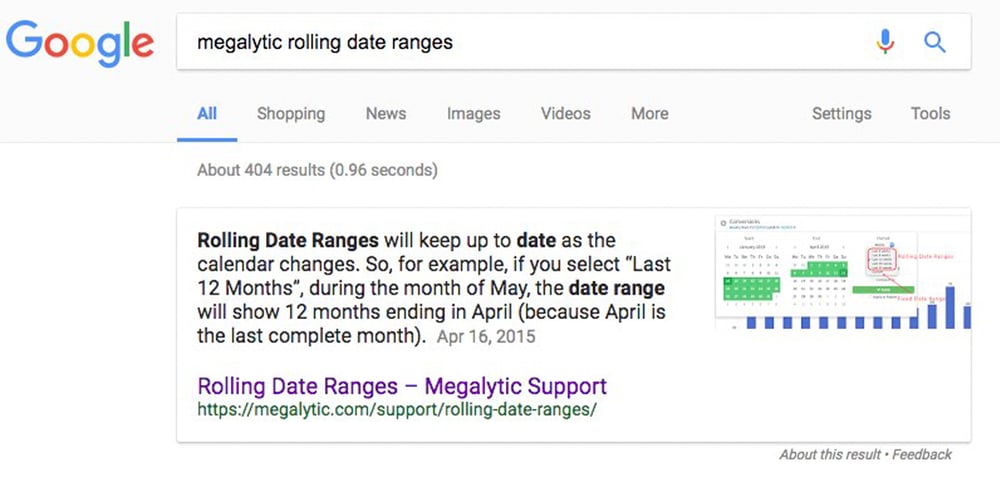
Local Results
One of the most significant alterations to search results relates to local search. Whether we are actually searching for a local result or are simply using a query that Google has associated with potential local intent, it is not uncommon to see a map with selected listings at the top of our results. At one point we’d see up to seven listings, often called the “7-pack” more recently, we’re seeing only three.
While the results displayed here are largely driven by the location of the searcher when their query is entered, there are certainly opportunities to help support a presence in this spot.
NAP – In the search world, the acronym NAP stands for name, address and phone number. Having this information clearly displayed in a global location on the site, like a header or footer, is a critical step in helping designate a physical location.
Google Business Listing and G+ Profile – Another way to ensure Google fully understands your location is to claim your Google business listing on Google My Business, and ensure that it reflects the same name and geographic information. There are other benefits to fully maximizing your Google business listing, as wel as your Google+ profile, that we’ll delve into a little later.
Consistent NAP – Not only does it help to have your NAP on your site and associated with a Google business listing, other off-site references and citations should also be as consistent as possible with the information on your site and in your Google profiles.
Reviews – While reviews aren’t mandatory to be listed in local results, for more competitive terms, having positive reviews can help influence your position.
For brands that depend on local business, attention to these results has become crucial. While there’s no way to guarantee your presence in those three results featured with the map, sending clear messages to Google and following Google’s advice will be a big help.
The Knowledge Graph
Introduced in the US in 2012, Google’s Knowledge Graph is used to enhance user results based on a semantic understanding of how ideas and entities are connected. This may take numerous forms, from carousels of images at the top of the results to the branded Knowledge Panel that displays alongside results when a specific business is searched.
Much of this information is derived from a Google business listing, Google+ profiles, review sites and even Wikipedia entries. The content of the panels also varies depending on the nature of the business. Below is the Knowledge Panel for Google itself.
Here, there is information related to leadership, subsidiaries and a designation as a “technology company.” A branded Knowledge Panel for local businesses may also display things like contact information, business hours, reviews, social media profiles and photos. As companies, we do have some influence in what is displayed here. However, because this draws from Google business listings and Google+ profiles, we encounter another reason to claim and fully optimized these entities.
Featured Snippets and “People Also Ask”
If you’ve recently conducted a search that includes words like “What is,” “When was” or “Who is” you may have discovered that you don’t need to visit a website to get your answer. Instead, there is a short version of what you’re asking shown in a tidy little box at the top of results. This is a result of Google’s Featured Snippets layout. In case you haven’t seen it, below is the answer to the question, “What is the Knowledge Graph?”
This is another attempt on Google’s part to provide better, faster answers to users. While the question is answered with immediacy, users still have the option to dive further into the topic by clicking the link supplied on the Featured Snippet, or by choosing any of the results on the page. In addition to the Featured Snippet, you may also see a few additional dropdown options called “People Also Ask.” These are the related questions to a search for “How does Google Work?”
While there is no way to guarantee you’ll be Google’s “chosen one” for a Featured Snippet, there is one thing that helps: answering questions. The more you focus your content on providing clear, concise answers to straightforward questions, the better chance you’ll have of being featured. It also helps when you have applied other tenants of SEO associated with an efficient architecture and building brand authority.
Video and Images
Another way that Google has diversified its search results is through the integration of images and videos in the SERPS. Again, these mixed results are the application of Google’s aggregated data based on previous search behaviors and the availability of relevant diversified content forms. As an example, it’s very common to find video results in the results associated with “How to” questions. Instructive videos and tutorials located on YouTube will often be the selected entries for this type of search. For example, answering the question “How to make a pie:”
Images on the other hand are frequently inserted into the mix when the search query is broad and visual. See results for the phrase “Rose Bouquet:”
As always, Google is “the decider” when it comes to when and how to display these integrated results. But for marketers, making sure you have diversified forms of content that are aptly labeled is the foundation for inclusion. That means researching your target keywords, analyzing where videos and images are or should be included and creating content to meet these user needs. Having image alt-tags and video and image sitemaps attached to your site can also help Google find this content, giving it a better chance of being returned for these searches.
Tweets
In the last few years, we’ve also seen a closer relationship between Twitter and Google as the search engine started displaying recent tweets on a subject directly in search results. Here, a search for “Grand Canyon” returns three tweets, one from the official Grand Canyon National Park Service account and two others using #GrandCanyon.
While a social media strategist may tell you hashtags are important for campaigns, no matter how silly your grandmother finds them, they can also appear in Google’s search results. It helps to research the kinds of searches in your space that are already showing Twitter results to help zero-in on which hashtags may help you gain search visibility. If it’s a subject you can talk about regularly with fresh insights, it is well worth the time to investigate.
News Results
When a search query suggests an interest in a subject which is current or trending it is likely you will also see “Top Stories” appear in the search results. This is also true of popular topics which frequently have new content on them or have gained timely interest. On March 14, “Pi day”, the topic of “Pies” has fallen into this category.
While not every site has a newsworthy contribution on every topic, if there is news relevant to your industry, it makes sense to for your brand to participate in the conversation. Current events are often subject to a Query Deserves Freshness (QDF) factor in Google’s rankings. Being present and active during a time of great public interest that is relevant to your brand is to your benefit.
If you are a news site, there is also the option of going through the process to become included in Google News as well as using a news sitemap. While there are several specifications for qualification, if you meet those criteria, the exposure can be worth the effort.
Conclusion
Google’s relentless drive to reinvigorate its SERPS creates an ever-moving landscape for marketers.
However, it may not make sense to try to do everything at once. While Google is a juggernaut, most companies are small teams or even one-person shows. The best approach is to identify which varied means of content make the most sense based on your audience and business needs, and from there focus on excelling in one area at a time.
The changing composition of search results can be a little intimidating, but research and focus can be your best friends for figuring out where your opportunities lie and how to seize them.
